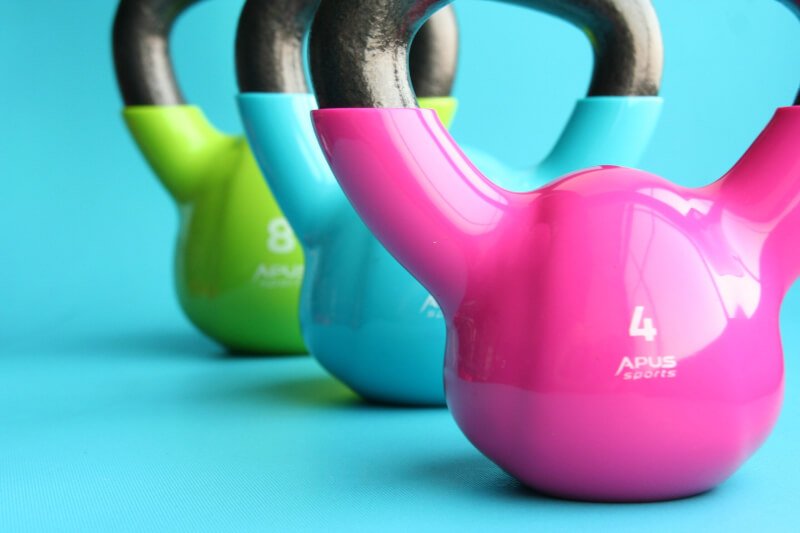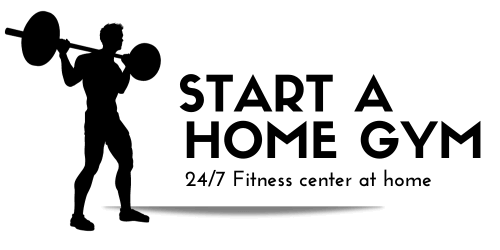If you’ve been wondering whether you can hire a personal trainer for your home gym workouts, the answer is a resounding yes! Whether you’re looking to achieve your fitness goals, stay motivated, or simply need guidance on proper form and techniques, a personal trainer can be an invaluable asset. With their expertise and personalized approach, they can tailor workouts to suit your specific needs and provide the support you need to reach your full potential. So, if you’re ready to take your home workouts to the next level, hiring a personal trainer might be just what you need.

Benefits of hiring a personal trainer for home gym workouts
Customized workout plan
When it comes to working out in your home gym, having a customized workout plan is essential. A personal trainer can tailor a plan specifically to your goals, taking into account your fitness level, preferences, and any limitations or injuries you may have. This personalized approach ensures that you get the most out of your workouts and make progress towards your desired results.
Personalized attention and motivation
One of the biggest advantages of having a personal trainer for your home gym workouts is the personalized attention you receive. Unlike a crowded gym setting, you have the undivided attention of your trainer, who can ensure that you are using proper form and technique, offer corrections and modifications when needed, and provide real-time feedback. Furthermore, a personal trainer can serve as a source of motivation and encouragement, pushing you to reach your full potential and helping you stay on track with your fitness goals.
Proper form and technique
Improper form and technique can not only prevent you from achieving optimal results but also increase the risk of injury. A personal trainer is trained to teach and demonstrate proper form for various exercises, ensuring that you perform them safely and effectively. They can help you understand the mechanics of each movement, emphasize the importance of alignment, and provide guidance to prevent common mistakes. By mastering the correct technique, you can maximize your workout efficiency and minimize the risk of injury.
Goal setting and accountability
Setting specific and achievable goals is crucial for progress in any fitness journey. With a personal trainer, you can establish realistic and measurable goals that align with your aspirations. Whether you aim to lose weight, build strength, or improve your overall fitness, a trainer will work with you to create a roadmap towards achieving these goals. Additionally, they hold you accountable for your workouts, ensuring that you stay consistent and motivated along the way.
Safety and injury prevention
Working out at home can sometimes present safety challenges, especially if you are unfamiliar with proper exercise techniques or if you lack supervision. Hiring a personal trainer for your home gym workouts helps mitigate these risks. They will guide you through exercises that are suitable for your fitness level and provide recommendations on equipment usage, helping prevent injuries and accidents. Furthermore, by closely monitoring your movements and offering corrections, a trainer can identify any potential form inefficiencies that could lead to injury and address them promptly.
Finding a personal trainer for home gym workouts
Evaluate your goals and needs
Before starting your search for a personal trainer, it’s important to evaluate your goals and needs. Consider what you hope to achieve through your home gym workouts and what specific areas you need guidance and support in. This will help you communicate your expectations and find a trainer who specializes in the relevant areas.
Ask for recommendations
Seeking recommendations from friends, family, or fellow fitness enthusiasts can be a great starting point in finding a personal trainer for your home gym workouts. Hearing about their experiences with different trainers can give you insights into their expertise, teaching style, and overall effectiveness. You can also leverage online forums, fitness communities, and social media groups to gather recommendations and testimonials.
Check credentials and qualifications
When considering potential trainers, it’s important to check their credentials and qualifications. Look for certifications from reputable organizations such as the National Academy of Sports Medicine (NASM), the American Council on Exercise (ACE), or the International Sports Sciences Association (ISSA). These certifications indicate that the trainer has undergone extensive training and has met certain standards of knowledge and expertise.
Interview potential trainers
Once you have a shortlist of potential trainers, it’s a good idea to interview them to get a better sense of their approach and teaching style. During the interview, ask about their experience with home gym workouts, their training philosophy, and their ability to adapt to individual needs. This will help you determine if their coaching style aligns with your preferences and if they are a good fit for your goals.
Discuss scheduling and availability
Before finalizing your decision, discuss scheduling and availability with the potential trainers. Make sure they can accommodate your preferred workout days and times, and that they are flexible enough to adjust the schedule if needed. Open communication about availability upfront will help ensure that both you and the trainer are on the same page and can maintain consistency in your training sessions.

Determining the budget for a personal trainer
Research average rates
When determining the budget for a personal trainer, it’s important to research the average rates in your area. Rates can vary depending on factors such as the trainer’s experience, qualifications, and location. By understanding the market prices, you can set a realistic budget and have a better idea of what to expect.
Consider the frequency and duration of sessions
The frequency and duration of your training sessions will also impact your budget. Assess how many sessions per week you are willing and able to commit to, as well as the desired duration of each session. Keep in mind that longer sessions or more frequent sessions may require a higher investment.
Evaluate the value of expertise and convenience
While the cost of hiring a personal trainer may seem like a significant investment, it’s essential to consider the value of their expertise and the convenience they provide. A skilled trainer can design effective workouts, offer valuable guidance and support, and save you time and effort by creating personalized programs. Additionally, the convenience of having a trainer come to your home gym eliminates the need for commuting to a gym and allows for greater flexibility in scheduling.
Explore package deals and discounts
Some trainers offer package deals or discounts for clients who commit to multiple sessions upfront. This can be a cost-effective option if you plan to train consistently over a longer period. Look for trainers who offer package deals and discuss the potential for discounted rates based on your commitment level.
Assess long-term financial commitment
Before making a final decision, assess your long-term financial commitment to hiring a personal trainer. Consider if you have the resources and willingness to invest in ongoing training sessions. If you anticipate any potential financial constraints, be open and transparent with the trainer to explore possible alternatives or solutions.
Preparing your home gym for personal training sessions
Assess available equipment
Before starting personal training sessions in your home gym, assess the equipment you currently have. Take inventory of the dumbbells, resistance bands, stability balls, or any other exercise equipment you have available. This will help your trainer design workouts that utilize the resources you already own.
Create a suitable workout space
Designate a specific area in your home gym as your workout space. Clear out any clutter or obstacles to create a safe and functional environment. Ensure that you have enough space to perform exercises comfortably and with proper form. Having a dedicated workout space helps foster a positive mindset when it’s time to train.
Ensure proper ventilation and lighting
Good ventilation and lighting are crucial for creating an optimal workout environment. Ensure that your home gym has adequate air circulation to keep you cool and comfortable during intense workouts. Additionally, make sure the room is well-lit to prevent any accidents or injuries during exercise.
Purchase any necessary equipment
Depending on your goals and the recommendations of your trainer, you may need to purchase additional equipment for your home gym. This could include items such as adjustable dumbbells, a weight bench, a suspension trainer, or a yoga mat. Consult with your trainer to create a list of essential equipment and make informed purchases based on your budget and space restrictions.
Discuss equipment preferences with the trainer
Communication with your trainer regarding equipment preferences is vital for a seamless training experience. If you have specific equipment you would like to incorporate into your workouts, discuss this with your trainer. They can help you maximize the use of your equipment or provide alternatives that yield similar results.

Establishing goals with your personal trainer
Identify specific objectives
To make the most of your personal training sessions, it’s important to establish clear, specific objectives. Identify what you want to achieve from your workouts, whether it’s increasing strength, losing weight, improving cardiovascular fitness, or something else entirely. Having specific objectives helps provide direction and gives you and your trainer a target to work towards.
Set realistic and measurable goals
It’s essential to set realistic and measurable goals so you can track your progress and celebrate your achievements along the way. Discuss with your trainer what would be attainable and within a reasonable time frame. Instead of aiming to “get in shape,” focus on concrete goals like being able to do a specific number of push-ups, completing a certain distance run, or lifting a particular amount of weight.
Discuss time frame and milestones
In addition to setting realistic goals, establish a time frame for achieving them. Break down larger goals into smaller milestones so you can consistently measure your progress and stay motivated. For example, if your ultimate goal is to run a marathon, set milestones of completing a 5k, a 10k, and a half-marathon along the way.
Categorize goals into short-term and long-term
Categorizing your goals into short-term and long-term objectives can help you stay focused and motivated throughout your fitness journey. Short-term goals provide immediate targets to work towards, while long-term goals help you keep the bigger picture in mind. This balance between immediate gratification and long-term progress ensures a sense of accomplishment and sustains motivation.
Track progress and make necessary adjustments
Regularly tracking your progress is essential for staying on track towards your goals. Keep a workout log or use a fitness tracking app to record your exercises, weights, repetitions, and any other relevant data. This not only helps you see your progress over time but also enables your trainer to identify areas for improvement and make necessary adjustments to your workout plan.
Scheduling and booking personal training sessions
Determine preferred session frequency
Before booking personal training sessions, determine the frequency that works best for you. Consider your availability, energy levels, and other commitments when deciding how many sessions per week or month you can realistically commit to. It’s important to strike a balance between pushing yourself and allowing for ample recovery time.
Coordinate availability with the trainer
Coordinate your availability with the personal trainer to find mutually suitable time slots for your workout sessions. Discuss your preferred days and times, while also considering the trainer’s schedule. Flexibility from both parties can help ensure consistent training and minimize potential scheduling conflicts.
Discuss session duration and time slots
During the scheduling process, discuss the ideal duration for your training sessions. This can vary depending on your goals, fitness level, and availability. Some individuals may prefer shorter, more intense sessions, while others may prefer longer sessions with more rest time. Work with your trainer to determine the optimal session duration and find time slots that accommodate both your schedules.
Plan for flexibility and rescheduling
Life can sometimes throw unexpected curveballs that disrupt your planned training sessions. It’s important to plan for flexibility and understand that there may be times when rescheduling is necessary. Discuss the trainer’s policy on rescheduling and how far in advance notice is required. Having open and transparent communication allows for smoother rescheduling and avoids any unnecessary conflicts.
Consider the booking process and cancellation policy
As you finalize your decision to hire a personal trainer, consider the booking process and the cancellation policy. Ensure that the process is straightforward and convenient for both parties. Additionally, review the trainer’s cancellation policy to understand any potential fees or restrictions associated with canceling or rescheduling sessions.
Creating a safe and effective workout environment
Warm-up and cool-down routines
Prior to each training session, it’s crucial to incorporate warm-up and cool-down routines. Warm-up exercises increase blood flow to the muscles, loosen joints, and prepare your body for the upcoming workout. This can include dynamic stretches, light cardio, or mobility exercises. Cool-down routines, on the other hand, help prevent post-workout soreness and stiffness by gradually decreasing your heart rate and stretching out the muscles.
Proper use of equipment
Using equipment properly is essential for both safety and effectiveness. Your personal trainer will guide you on how to correctly use the equipment in your home gym. Whether it’s demonstrating proper form for a bench press or teaching you the correct way to use resistance bands, they will ensure that you are utilizing the equipment in a manner that is safe and maximizes its benefits.
Implementing appropriate rest periods
Rest periods are crucial for proper muscular recovery and to prevent overexertion. Your trainer will guide you on appropriate rest periods between exercises, sets, or circuits. This will help you maintain the desired intensity, maximize your performance, and minimize the risk of injury.
Monitoring heart rate and intensity
Monitoring your heart rate and exercise intensity is key to achieving optimal results and avoiding potential risks. Your trainer may utilize heart rate monitors or other tracking devices to assess and regulate your exertion levels. By staying within your target heart rate zone, you can ensure that you are working at an appropriate intensity for your fitness level and goals.
Incorporating progressive overload
Progressive overload is a fundamental principle in fitness that involves gradually increasing the difficulty or intensity of your workouts over time. A personal trainer will guide you in progressively overloading your workouts by adding weight, increasing repetitions, or challenging yourself with more advanced exercises. This ensures that your body continues to adapt and improve, preventing plateaus and enhancing your overall fitness level.
The role of nutrition in home gym workouts
Understanding dietary needs and goals
Nutrition plays a crucial role in supporting your home gym workouts and achieving your desired results. Your personal trainer can help you comprehend your dietary needs and goals. They can provide guidance on macronutrients (carbohydrates, proteins, and fats) and micronutrients (vitamins and minerals) and how they relate to your specific fitness goals.
Seeking guidance on meal planning
Developing a structured meal plan that aligns with your goals can be challenging. A personal trainer can provide guidance on how to create a healthy and balanced meal plan that supports your home gym workouts. They can help you understand portion sizes, meal timing, and the importance of incorporating nutrient-dense foods into your diet.
Discussing food choices and portion control
Your personal trainer can also help you make informed food choices and practice portion control. They can educate you on the importance of consuming whole, nutrient-dense foods and avoiding excessive processed foods. By discussing portion control strategies, they can help you maintain a healthy balance between caloric intake and energy expenditure.
Supplement recommendations and considerations
Supplements can be a useful addition to your diet and fitness routine, but it’s important to approach them with caution. Your personal trainer can provide recommendations on supplements that align with your goals and offer advice on dosage and timing. They can also help you understand the potential benefits and limitations of different supplements and advocate for a well-rounded approach to nutrition.
Tracking nutrition and making adjustments
Tracking your nutrition and making adjustments as needed is an effective way to fine-tune your diet and optimize your results. Your trainer can guide you on how to track your food intake, whether through a food diary, a nutrition app, or other methods. By reviewing your nutrition log, they can identify any areas that may need adjustment and make recommendations based on your progress and goals.
Communication and feedback in the trainer-client relationship
Open and honest communication
Effective communication is the foundation of a successful trainer-client relationship. Be open and honest with your personal trainer about your goals, preferences, limitations, and any concerns or questions you may have. This allows your trainer to better understand your needs and tailor their coaching style and programming to suit you.
Providing feedback on workouts
Your feedback on workouts is valuable to your personal trainer. Let them know what you enjoyed or found challenging in each session, as well as any exercises or techniques that you particularly liked or disliked. This feedback helps them make adjustments to your workout plan and ensures that your sessions remain engaging and effective.
Expressing concerns or questions
If you have any concerns or questions regarding your workouts, don’t hesitate to express them to your personal trainer. Whether it’s about a particular exercise, a nutrition recommendation, or anything else related to your fitness journey, open communication allows for clarification and a better understanding of the trainer’s approach.
Receiving and implementing suggestions
Your personal trainer is there to provide guidance, support, and expertise. Be open to receiving their suggestions and recommendations. They may introduce new exercises, modify existing ones, or propose adjustments to your nutrition plan. Trust their professional judgment and implement their suggestions with an open mind.
Maintaining a positive and collaborative relationship
A positive and collaborative relationship with your personal trainer is essential for long-term success. Remember that your trainer is there to support and motivate you, but ultimately, both parties contribute to the achievement of your goals. Maintain a positive attitude, trust the process, and work together with your trainer to continually improve and reach new milestones.
Alternatives to hiring a personal trainer for home gym workouts
Online workout programs and apps
If hiring a personal trainer is not feasible or within your budget, online workout programs and apps can be a great alternative. These platforms offer a wide variety of exercise routines, instructional videos, and progress tracking tools. While they may not provide the same level of personalized attention, they can still provide structure and guidance for your home gym workouts.
Virtual personal training sessions
Virtual personal training sessions allow you to work with a personal trainer remotely, simulating the experience of having a trainer in person. Through video calls and online platforms, you can receive personalized guidance, instruction, and motivation without the need for physical proximity. Virtual training sessions also offer greater flexibility in terms of scheduling and location.
Group fitness classes or boot camps
Group fitness classes or boot camps organized by fitness centers, community centers, or local trainers can provide a sense of community and motivation. These sessions typically involve a group of participants led by an instructor who guides and motivates the group through various exercises. The camaraderie and friendly competition within the group can be a fun and effective way to stay motivated during home gym workouts.
Self-guided workout plans
Self-guided workout plans are an option if you have a good understanding of exercise techniques and are comfortable designing your own workouts. With the abundance of online resources, fitness magazines, and books available, you can educate yourself on effective exercise programming and create your own routine. However, it’s important to ensure that the workouts are balanced, safe, and aligned with your goals.
Seeking support from friends or workout partners
Working out with a friend or workout partner can help provide motivation, accountability, and support during your home gym workouts. By sharing the experience with someone else, you can push each other to stay committed and enjoy the journey together. Your partner can also serve as a spotter for certain exercises, promoting safety during your workouts.


